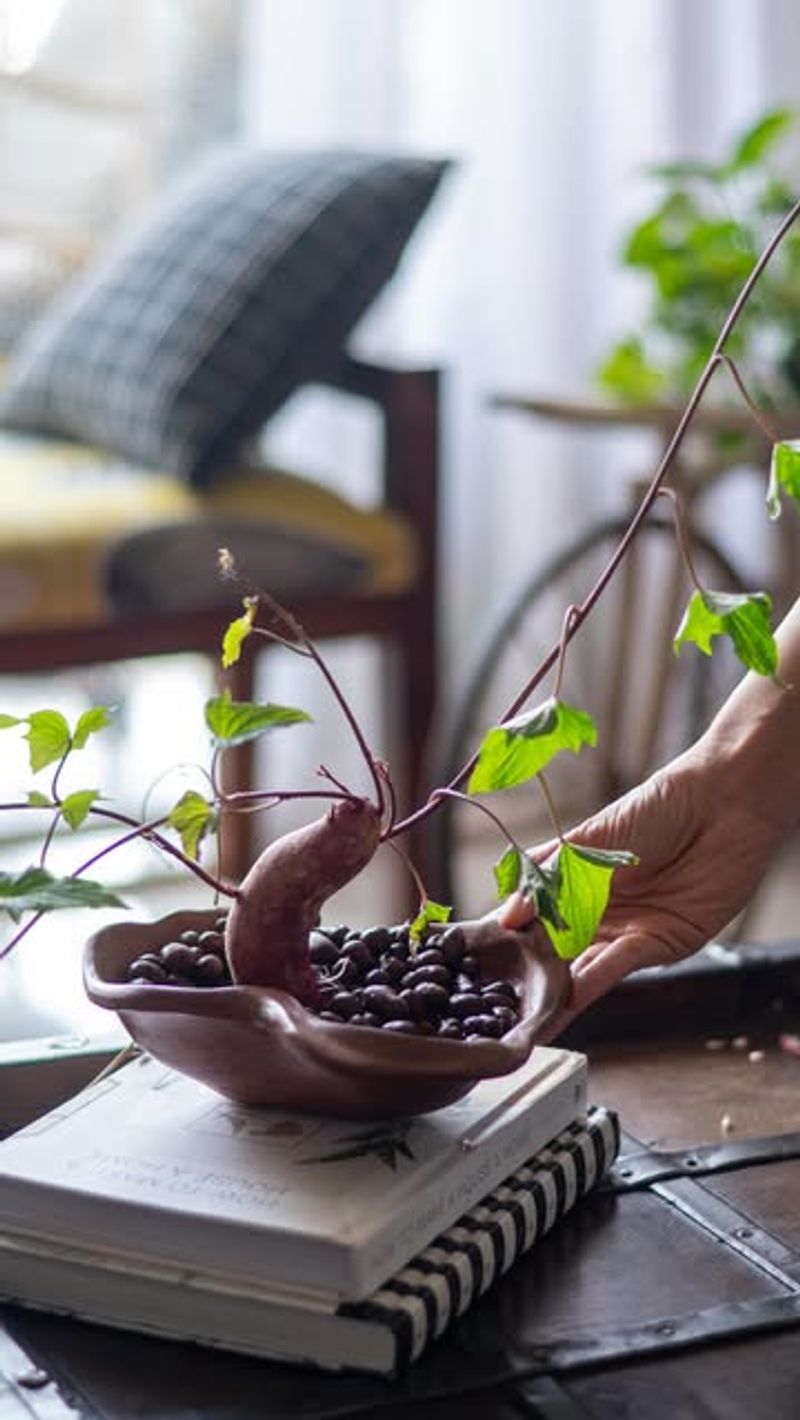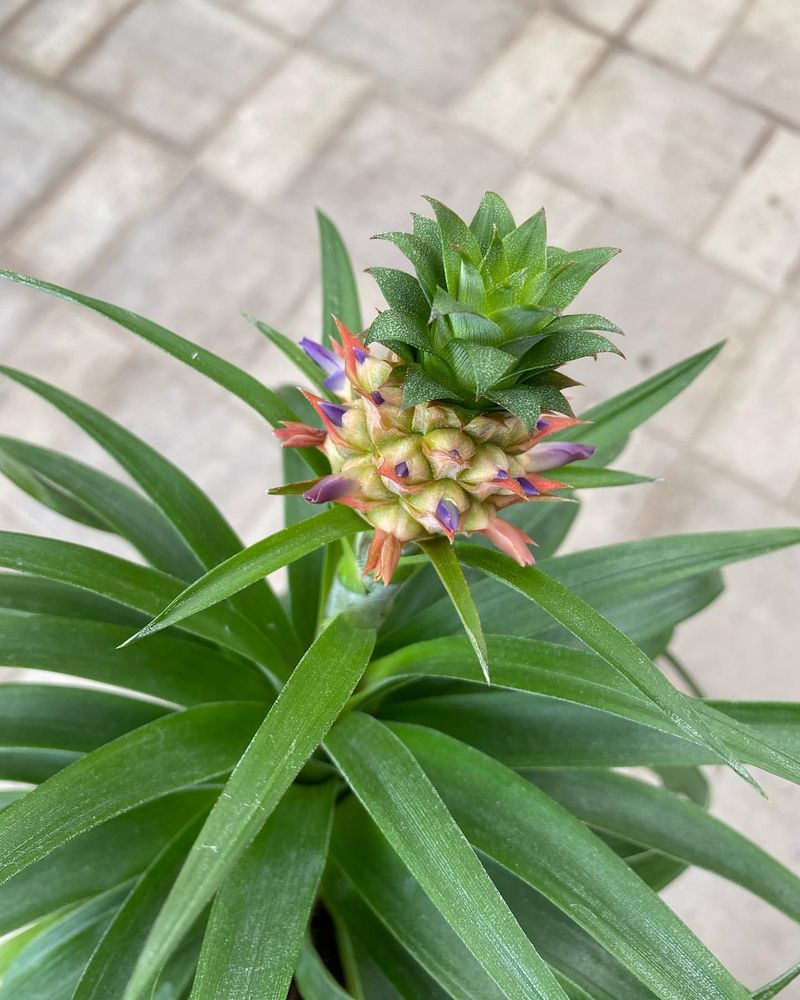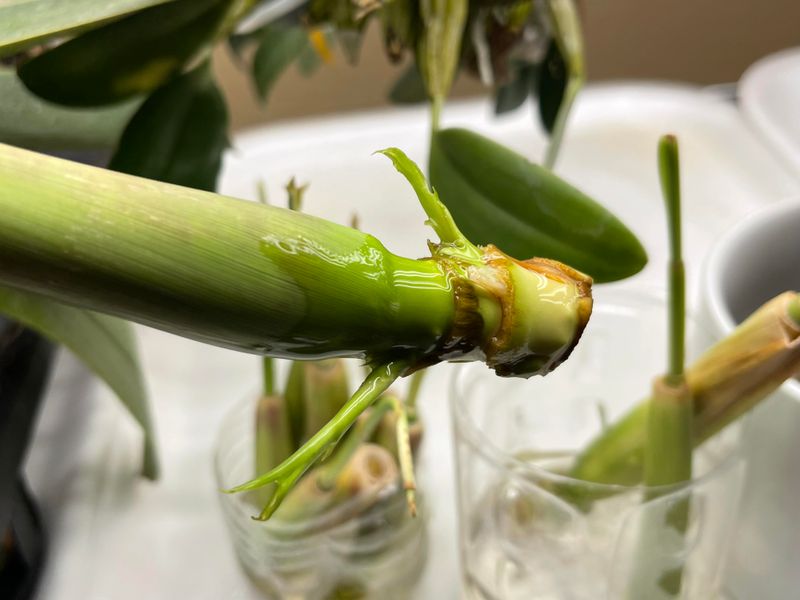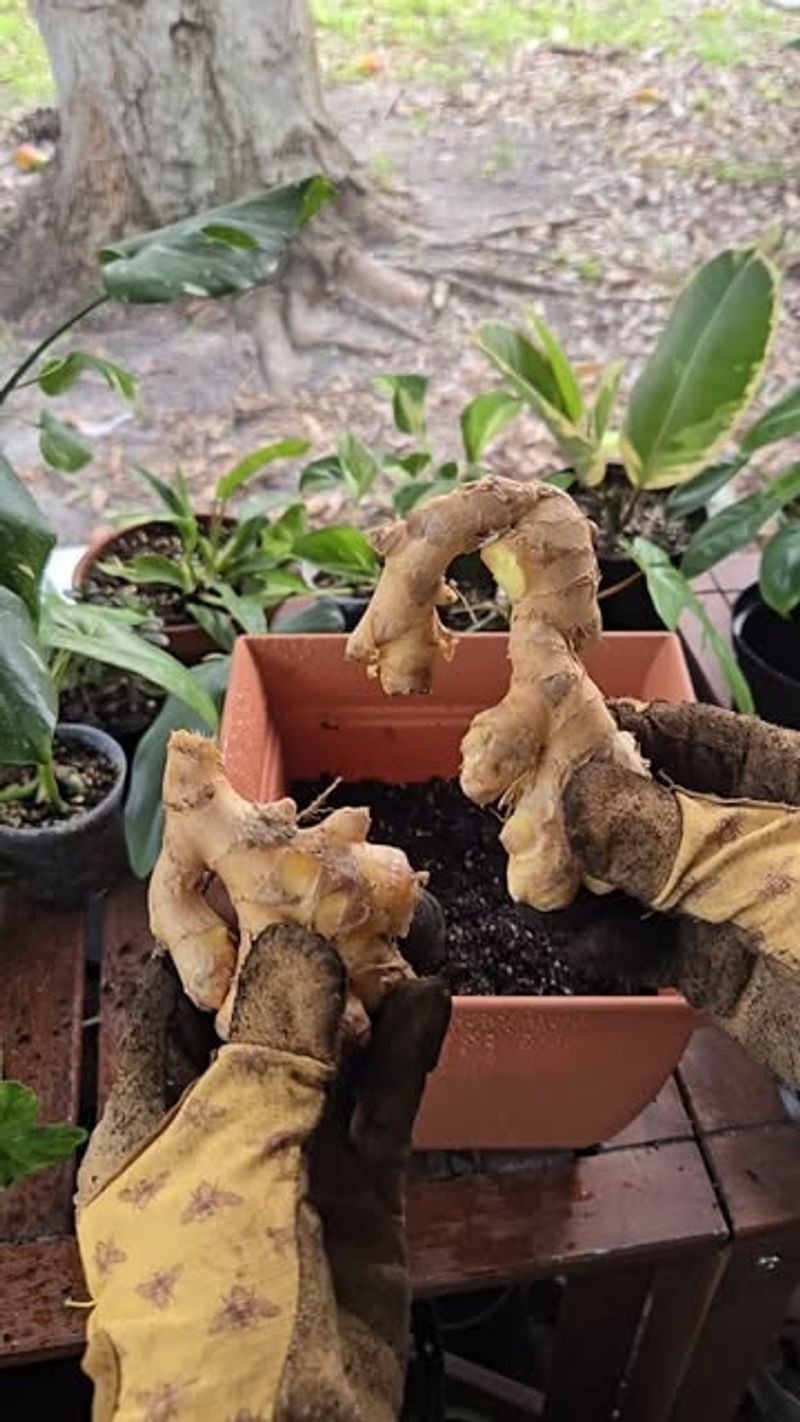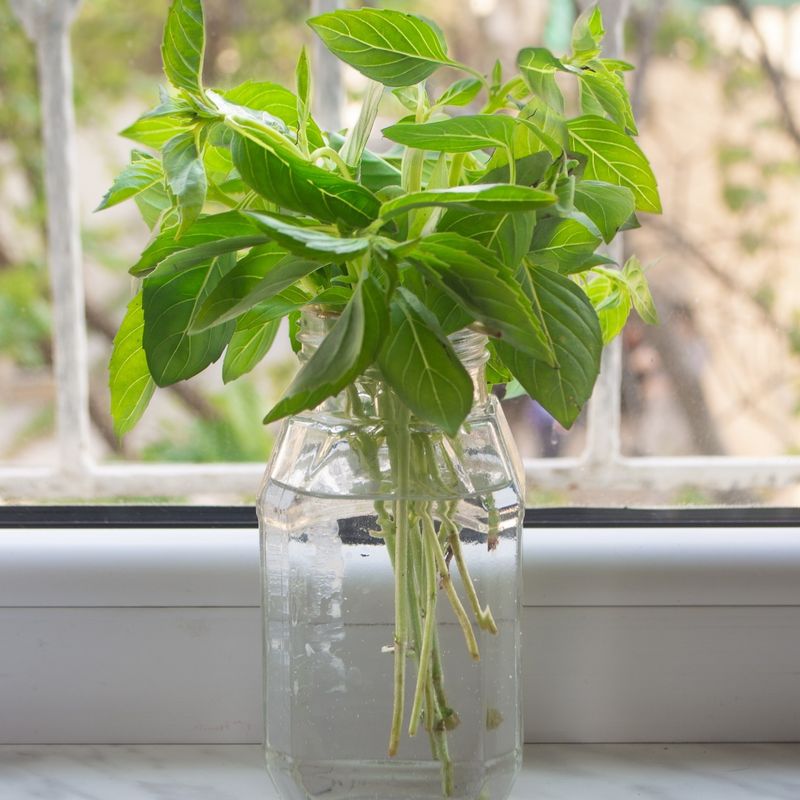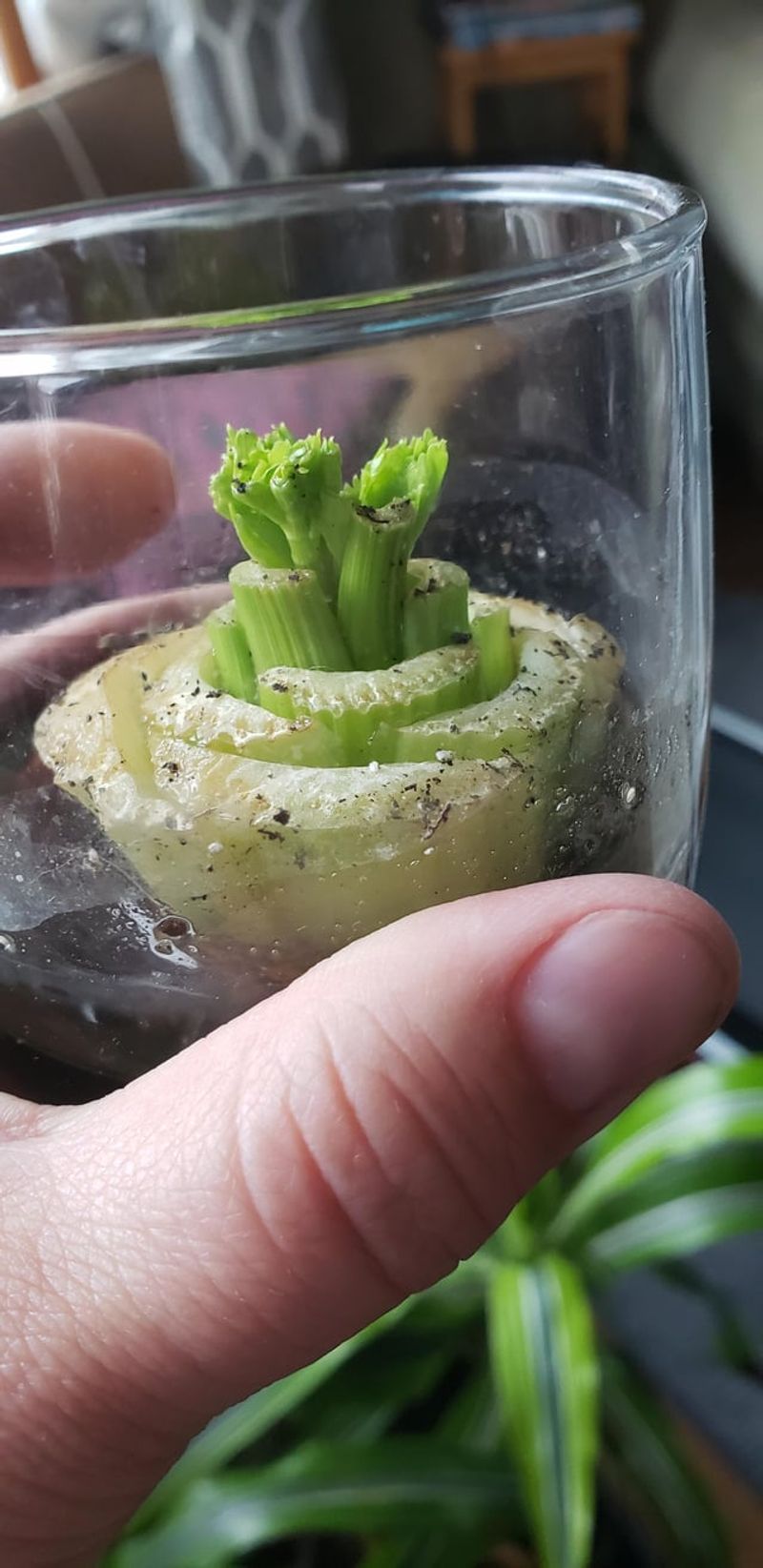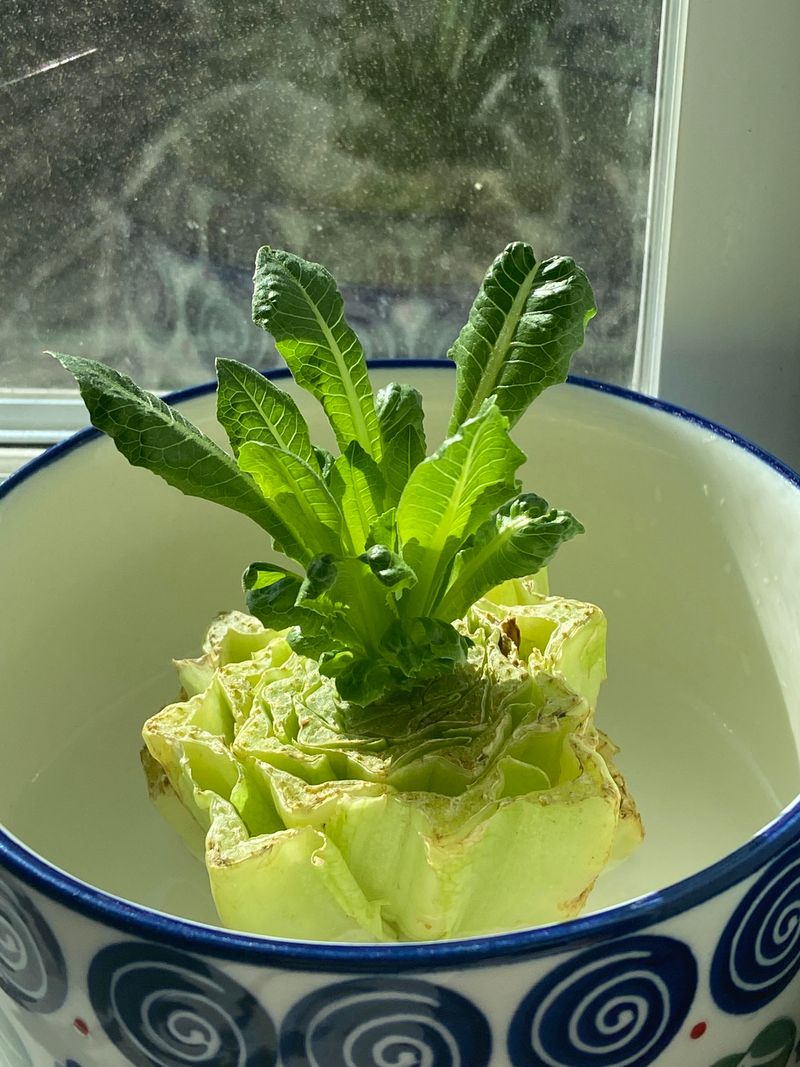Turning everyday kitchen scraps into thriving houseplants is a rewarding way to reduce waste and add greenery to your home. Rhode Island’s climate, with its distinct seasons and moderate humidity, creates ideal indoor growing conditions for many plants started from kitchen leftovers.
Discover how those food scraps destined for the compost bin can transform into beautiful, living decorations for your home.
1. Avocado Trees From Pits
Save those avocado pits from your morning toast! After cleaning, pierce the pit with toothpicks and suspend it over water with the pointed end up. Within 2-6 weeks, roots will emerge from the bottom.
Once the stem reaches about 6 inches tall, transplant to soil in a bright spot away from direct heat sources. Rhode Island’s humid summers provide excellent growing conditions, though you’ll need to move plants away from drafty windows in winter.
2. Sweet Potato Vines
Got an old sweet potato sprouting in your pantry? Don’t toss it! Place half the potato in water using toothpicks to suspend it, with the sprouting end above water. Vibrant purple-green vines will soon cascade dramatically from the tuber.
Rhode Island’s moderate indoor humidity creates perfect growing conditions. The trailing vines thrive in bright, indirect light and make stunning hanging displays, especially during winter months when outdoor greenery is scarce.
3. Pineapple Top Plants
Next time you enjoy fresh pineapple, save that spiky crown! Trim away excess fruit, remove some bottom leaves to expose the stem, and let it dry for a few days. Place in water until roots form, then pot in well-draining soil.
Rhode Islanders find these tropical treasures surprisingly adaptable to indoor conditions. Position near south-facing windows during winter months to maximize light exposure. Your patience will be rewarded with a quirky, architectural plant that adds tropical flair to New England homes.
4. Carrot Top Ferns
Those carrot tops you usually discard can become delicate, feathery greenery! Cut about an inch from the top of carrots and place them in a shallow dish of water, cut side down.
Within days, fine roots appear, followed by ferny green shoots perfect for Rhode Island’s indoor growing conditions. While they won’t produce new carrots, these lacy greens make charming additions to windowsills. Their moderate water needs align perfectly with the state’s naturally humid atmosphere.
5. Lemongrass Stalks
Rescued those lemongrass stalks from your Thai takeout? Place them in water, and watch as roots develop within days. The slender, grassy blades soon stretch upward, bringing a hint of citrusy fragrance to your home.
Rhode Island’s warm indoor temperatures during winter heating season create ideal growing conditions. Once rooted, transfer to soil in a sunny spot. The aromatic leaves can be harvested for cooking year-round, bringing summer flavors to your kitchen even during snowy New England winters.
6. Ginger Root Houseplants
Found a forgotten knob of ginger starting to sprout? Plant it just below the soil surface in a wide, shallow pot. The knobbly rhizome sends up elegant reed-like stems with narrow leaves that rustle with the slightest breeze.
Rhode Island’s naturally humid indoor environment during winter months (thanks to heating systems) provides ideal conditions for this tropical plant. Position in bright, indirect light away from cold windows. As a bonus, you can harvest small pieces of fresh ginger while leaving the plant to continue growing.
7. Basil Stem Cuttings
Before tossing those store-bought basil stems, snip 4-inch pieces just below a leaf node. Remove lower leaves and place stems in water. Roots emerge within days, ready for potting in a week or two.
Rhode Island’s moderate indoor humidity creates excellent propagation conditions. Position your newly rooted plants near south-facing windows during shorter winter days. Fresh basil year-round means homemade pesto even when snow blankets the Ocean State, bringing Mediterranean flavors to New England kitchens.
8. Green Onion Regrowth
Save those green onion root ends from your cooking! Place the white bulb ends with roots attached in a small glass of water. New green shoots appear almost overnight, ready for continuous harvesting.
Rhode Island’s reliable indoor temperatures make these kitchen scraps incredibly productive year-round. Change the water every few days to prevent sliminess. For longer-term growth, transplant to soil once new roots develop fully. This endless supply of fresh greens brightens winter meals when outdoor gardening is impossible.
9. Celery Base Regeneration
Don’t throw away that celery base! Cut about 2 inches from the bottom and place it cut-side up in a shallow dish of water. Fresh green leaves emerge from the center within days, followed by slender stalks.
Rhode Island’s indoor growing conditions provide perfect humidity levels for regeneration. Once leaves appear, transplant to soil with just the top visible. While indoor-grown celery produces thinner stalks than store-bought, the leaves pack intense flavor for soups and stocks during long New England winters.
10. Romaine Lettuce Hearts
Save the core from your romaine lettuce! Place the base in a shallow dish of water and watch as new leaves emerge from the center within days. The growth is surprisingly fast and satisfying to observe.
Rhode Island’s consistent indoor temperatures provide ideal growing conditions. Once new growth appears, transplant to soil for continued production. While indoor-grown leaves stay smaller than garden-grown, they provide fresh greens for winter salads when Rhode Island gardens lie dormant under snow and ice.



